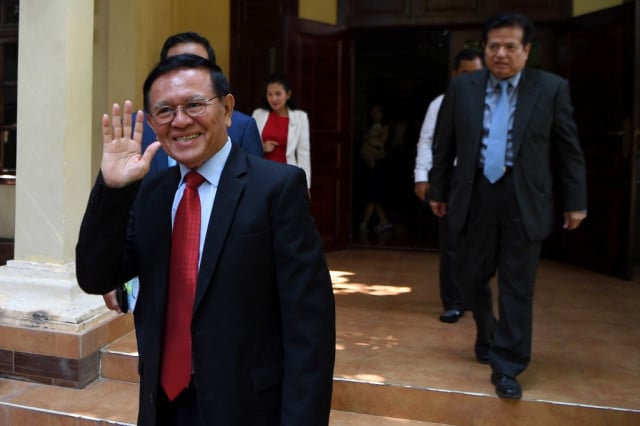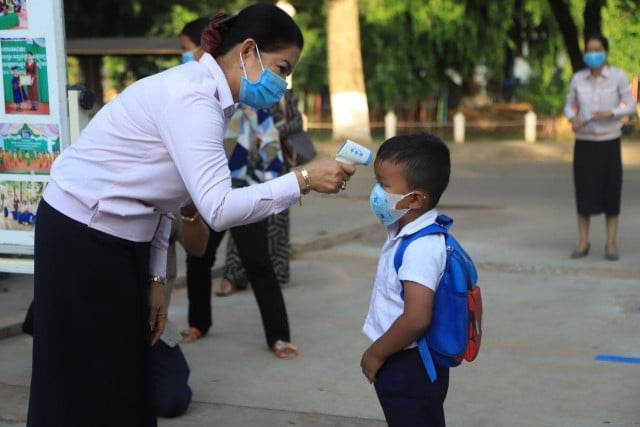Why New Year Festivals Should Serve as a Unifying Force in Diverse Southeast Asia

- By Vichana Sar
- April 5, 2024 1:00 PM
The Association of Southeast Asian Nations (ASEAN) does not have a unified New Year festival. However, four out of five mainland nations - Laos, Thailand, Myanmar, and Cambodia - have similar celebration customs to welcome the new year, which generally falls in April. New Year celebrations in these nations are vibrant and filled with joy, reflecting the rich tapestry of ASEAN's cultural diversity. Beyond the shared excitement of welcoming a new beginning, each nation uniquely weaves its traditions, customs, and spirituality into the fabric of its New Year festivities. In exploring the similarities and differences of these celebrations, we uncover the roots of each culture and the common threads that bind the ASEAN community together.
The New Year Pi Mai unfolds in Laos with cultural festivities. Central to this celebration is the Water Festival, a lively event symbolizing the cleansing of the past year's misfortunes and welcoming prosperity. Families come together, visiting temples to seek blessings, make offerings, and partake in traditional ceremonies. Pi Mai encapsulates the Laotian spirit of renewal, emphasizing the importance of leaving behind the old and embracing the new with hope and positivity.
Thailand's Songkran, the traditional Thai New Year, stands out for its exuberant water fights that cascade through the streets. Beyond the surface-level merriment, Songkran holds profound cultural and spiritual significance. Water symbolizes cleansing, and during these playful water battles, individuals wash away the troubles of the past year, purifying their spirits for the journey ahead. Temples become focal points for prayers, merit-making, and connecting with spirituality, reinforcing the Thai values of family, community, and renewal.
Myanmar ushers in its New Year with Thingyan, a festival rooted in water-centric customs and acts of merit. The festivities involve energetic water fights, traditional dance performances, and vibrant street processions. However, a more profound commitment to religious and cultural practices lies beneath the surface revelry. Myanmar's Thingyan emphasizes acts of kindness, charity, and merit-making to generate positive karma for the upcoming year. This blend of vitality and spiritual reflection encapsulates the essence of Thingyan, showcasing Myanmar's dedication to cultural heritage and communal well-being.
Cambodia welcomes its New Year, Choul Chnam Thmey, with a blend of tradition, spirituality, and familial bonds. Temple visits are a cornerstone of this celebration, where Cambodians pay homage to their ancestors, seek blessings, and participate in religious rituals. Families come together for elaborate meals, fostering a sense of unity and connection. Choul Chnam Thmey reflects Cambodia's commitment to preserving its cultural identity while promoting harmony and togetherness within the community.
While each ASEAN nation's New Year celebration is steeped in unique customs, they collectively embody the region's strength in diversity. ASEAN's commitment to "together for peace, security, and resilience" is exemplified in the shared values of familial bonds, respect for traditions, and spiritual reverence evident in these celebrations.
When ASEAN members join hands to celebrate their diverse New Year traditions, a powerful message of unity and understanding emerges. The beauty of this diversity lies not only in the celebration of unique cultural practices but also in the mutual respect and shared aspirations for a brighter future. The New Year becomes a symbolic bridge, connecting people across borders, fostering cultural exchange, and promoting a strong sense of belonging to a larger ASEAN family.
The New Year celebrations in Laos, Thailand, Myanmar, and Cambodia serve as vibrant expressions of cultural identity within the ASEAN community. While each nation proudly upholds its unique customs, the common threads of familial bonds, spiritual significance, and renewal weave together a tapestry of unity. As ASEAN members come together to celebrate these diverse traditions, they reinforce the shared commitment to peace, security, and resilience, embracing the strength of their collective diversity. The New Year becomes a celebration of the past and future and the enduring spirit that unites the ASEAN community.















